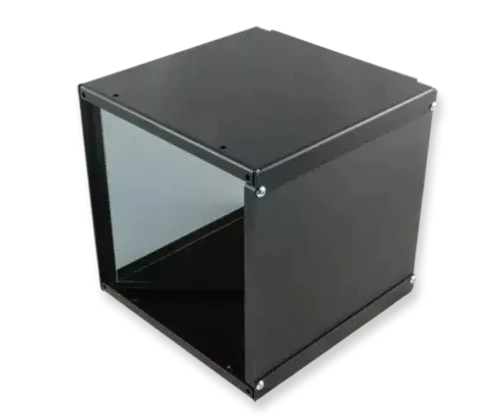Let there be light!
In the beginning there was only a camera (with a lens) and a subject, and the images taken were at the mercy of the elements, for when it was day, all was clear and in focus, yet night must follow day, when the image becomes dark, and all that could be seen is lost.
This somewhat scriptural depiction of imaging without the use of controlled lighting, while extreme and to be taken with a large pinch of salt, does hold some truth to it.
Imagine if your industrial vision application was at the whim of the ambient light conditions, the setup would be sub-optimal to say the least in the vast majority of cases.
Methods of illumination
Since you are (hopefully) convinced that most applications, so probably yours, need external illumination, you may be disappointed to learn that it’s not simply a case of purchasing any old light and away you go, oh no, far from it, here are just some different methods of lighting that all have different uses and applications:
- Top lighting. This is as close as you can get to “any old light” and can be achieved, among other ways, by:
- Coaxial lighting. While this is technically a form of top lighting (as the light comes from above the subject) it is very application specific so deserves its own entry on this list.
- Back lighting. As the name suggests, this is the “opposite” of top lighting in the sense that the light is produced behind the suspect.
- Dark field lighting. The dark field is the region where light wouldn’t be reflected directly into the camera’s view if the subject was a perfectly reflective plane, perpendicular to the lens’ optical axis. (see blog on bright field vs dark field lighting)
- Dome lighting. As the name suggests, the light incident on the subject is from many directions, scattered by the inside of a dome.
The good news is that we are not going to dive fully into all of these methods in any depth in a single go. All of these methods have merits and drawbacks that we will discuss separately.
Good ol’ fashioned plane lighting
Those who noticed the typo above are congratulated, however deceived. As is often the case, a brief introduction to a topic is by no means the end of the conversation, far from it.
Whatever you are using your cameras for you will almost always be collecting light that has come into contact with your subject at some point and in some way, be it scattering, reflecting or transmitted through it. So what? you may ask. Well depending on your application this can be absolutely vital. Reflection, scattering, and transmission all affect a property of light called polarisation.
For some applications polarisation is vital, say for observing qualitative stress patterns in some transparent materials, without polarisation this would simply not be possible. Reflections often have a certain polarisation probability associated with them so if an application demands light from all angles i.e. dome lighting for example, the light has been reflected, or rather scattered off the dome, several times in many cases, before being incident on the subject. As a result any kind of orientation of the light is undesirable as a photon from a given angle will reflect/ scatter differently depending on its polarisation, be that plane or otherwise. Hence in order to get truly uniform lighting, light incident on any part of the target from any angle should contain all polarisations of light jumbled together, such light is referred to as unpolarised light.
Lighting to suit the situation.
Given this it becomes plain that different applications can have very different illumination needs and is an area often overlooked. Please call or message us for a discussion on finding the right light source for your application.

